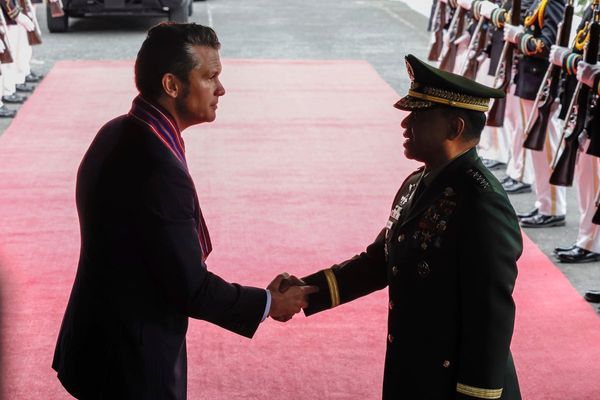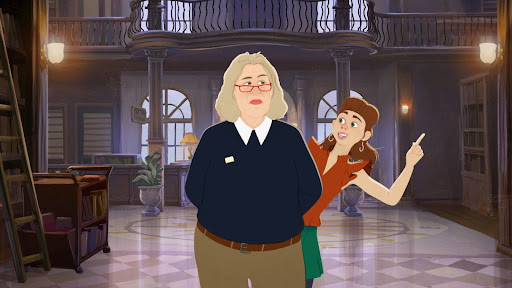
It’s an exciting time to be working in 3D animation. In recent years, 3D films and shows have showcased a wider range of visual styles, including some completely different from anything we’ve seen in the past. 2D and 3D pipelines are merging; projects like Spider-Man: Into the Spider-Verse and more recently Arcane used 3D pipelines to achieve looks that evoke handmade, traditional art forms like comic books and painting while pushing them to new places that take full advantage of the medium of animation.
We took inspiration from these and other innovative shows and movies while defining the art direction for Should We Studio’s new animated series, Ada. Ada juggles two worlds she can't really keep separate: her dull reality as a library assistant, and the grand future she imagines for all humanity. Each episode explores how a different technology could shape the future, and contains two visually distinct worlds–the present and the imagined future.
I wanted to create Ada because we all have a stake in the future, and therefore in the governance of the science and tech that will shape it, but futurist discourse is off-putting and exclusionary of everyone but a small set of sci-fi / tech enthusiasts. My goal was essentially to make science fiction for people who don’t think they like science fiction, and every creative decision was made with that in mind.
Why we mixed 2D and 3D techniques
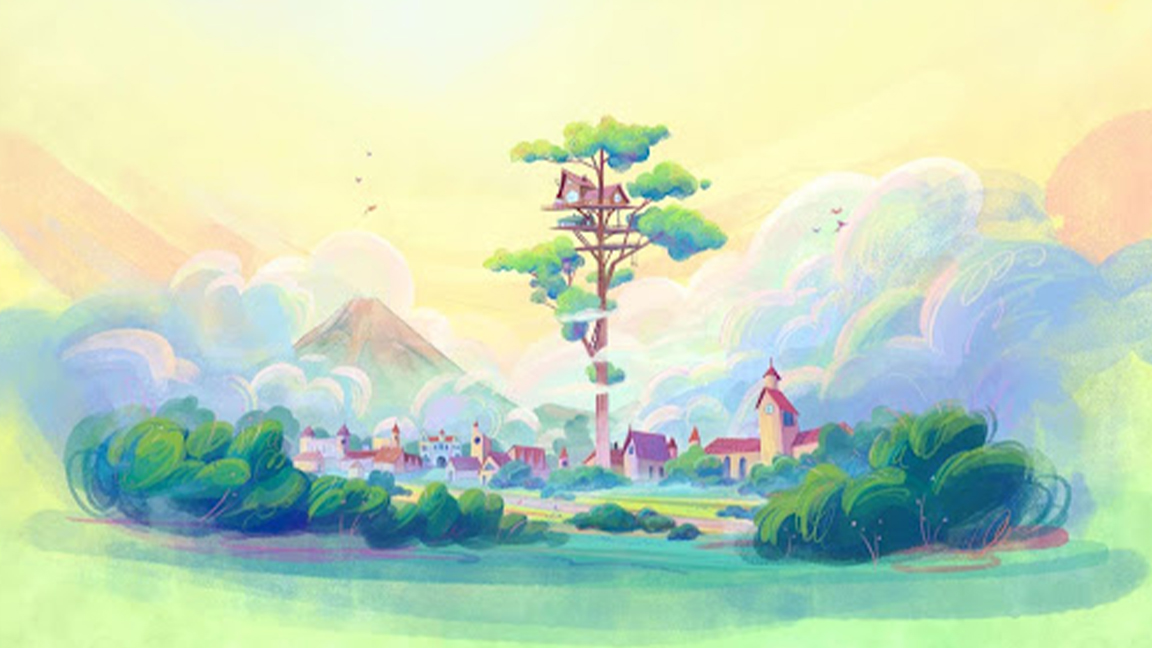
With our relatively small budget, team size and quick turnaround time, we quickly decided the best way to achieve the lush, handmade look we wanted within our constraints was to use a 3D pipeline. Our characters were animated in 3D with a simple, flat render, then composited with 2D digitally painted backgrounds and 2D FX animation. We changed up the look of the imagined world in every episode, for a total of six distinct visual styles across five episodes.
For the real-world setting, we drew inspiration from the epic libraries of history and literature. A theme in these stories is that it’s not enough to have the knowledge; you have to be able to access and link the right parts. At their best, librarians will draw new and exciting connections rather than reinforce existing beliefs.
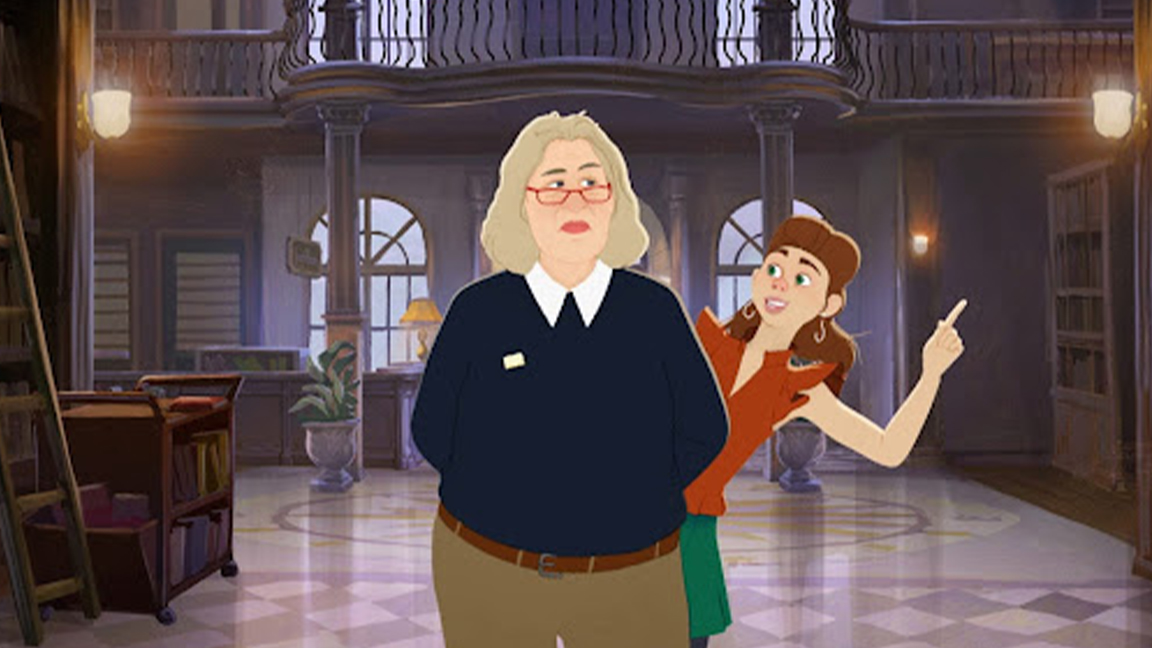
This idea of information overload and sense-making is especially relevant to artificial intelligence, the subject of Episode 4. In that episode, the story explores the risks of advanced AI through the character of an AI librarian that becomes widely used and its imperfections cause chaos.
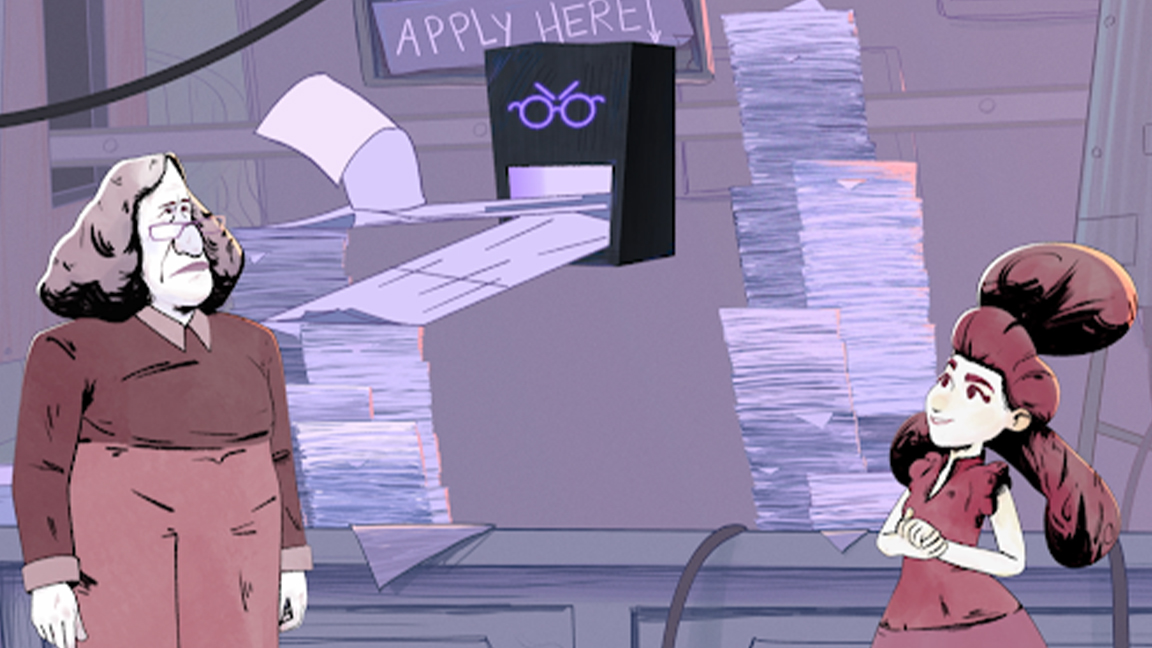
We used the colour palette to help signal that this would be a different story about AI from what audiences might have encountered in the past. We stayed away from the greens and blues typically associated with computers, as well as Terminator red, and chose a restricted palette of yellows and purples.
We wanted all the imagined worlds in the series to feel timeless rather than overtly futuristic, and we went with a retrofuturistic, steampunk aesthetic for this episode. We increased the visual noise in the backgrounds as well as the ambient noise in the sound design over the course of the episode to reinforce the sense of confusion and information overload.
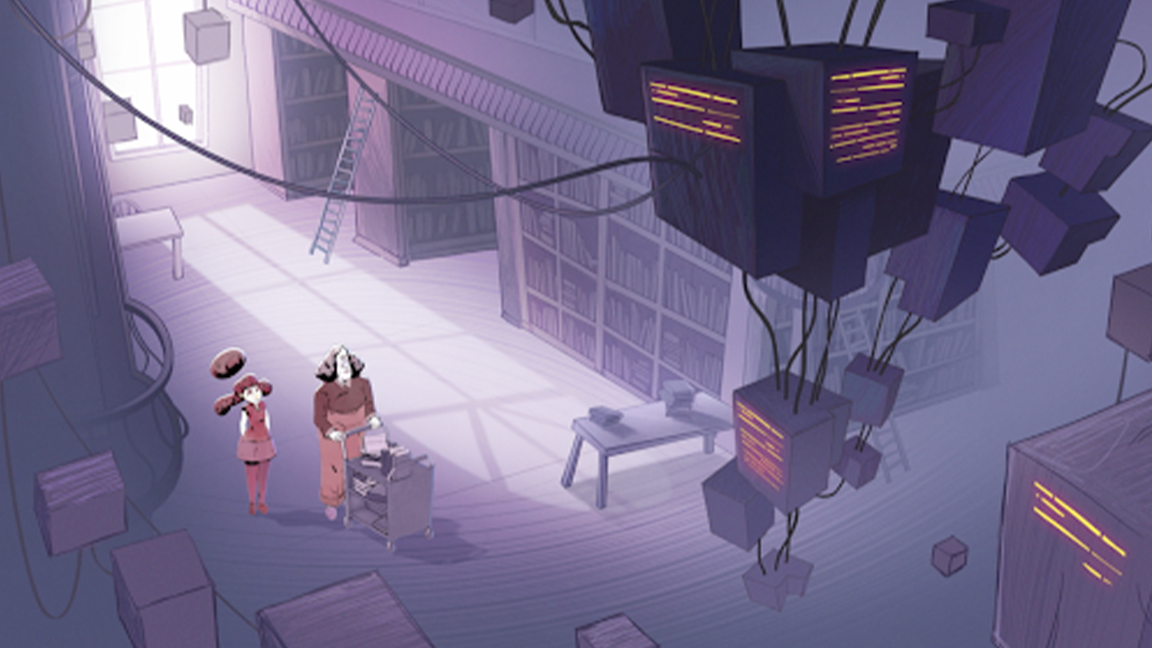
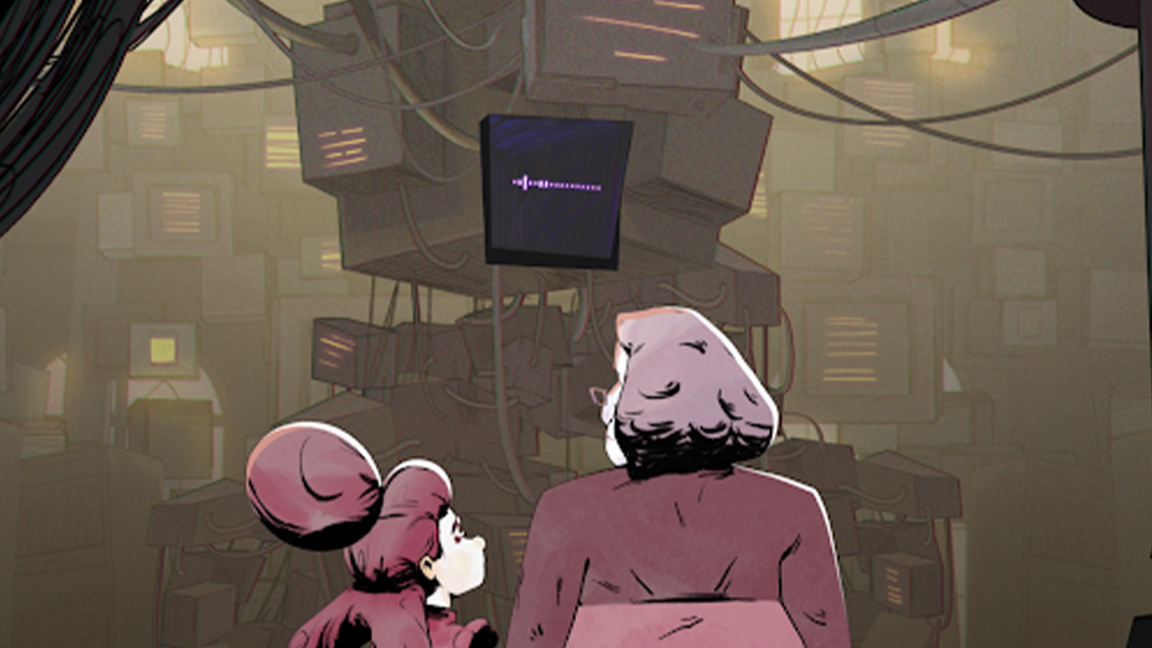
In this episode, we wanted to show how advanced AI could lead to disaster even when used with good intentions for seemingly mundane purposes–a sort of Kafkaesque boring apocalypse. We wanted to show the risks of AI without exoticizing them, and a key part of this was the character design of the AIs. Rather than anthropomorphic robots, we went with a simple black box to symbolise the challenges of understanding how these advanced systems work.
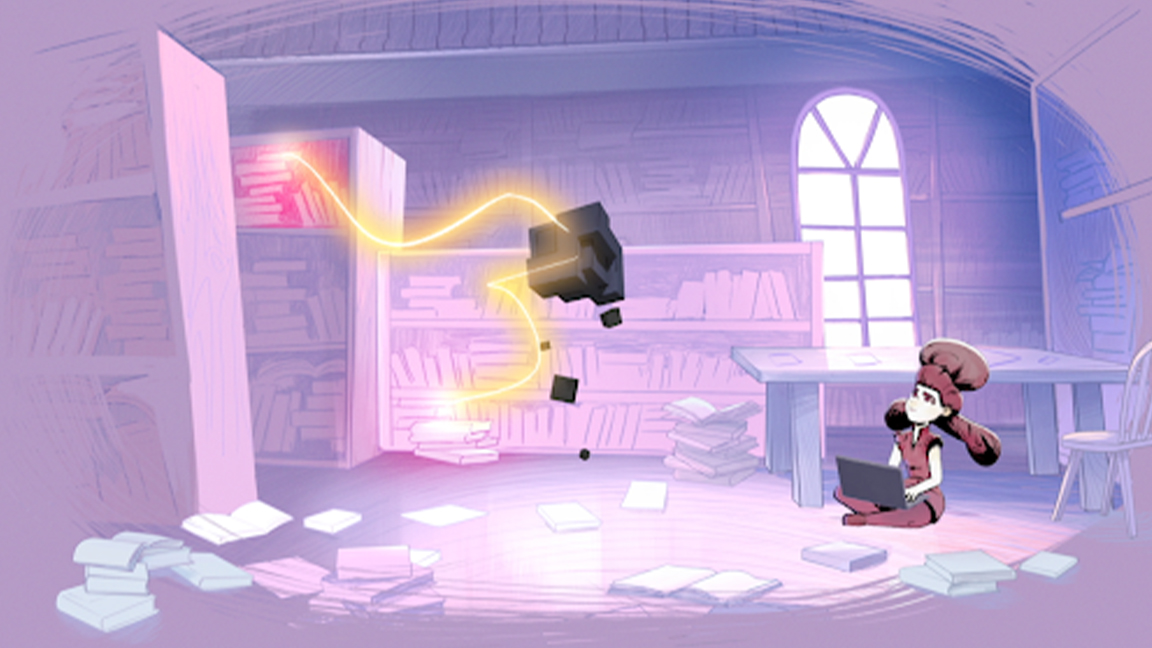
In every episode of Ada, we wanted to emphasise the uncertainty of the future: that it’s not set in stone, and depends on our choices. Visually, we incorporated this idea into the backgrounds in the imagined world by showing some of the canvas through the painting and having an unfinished look at the edges and a looser drawing and painting style.
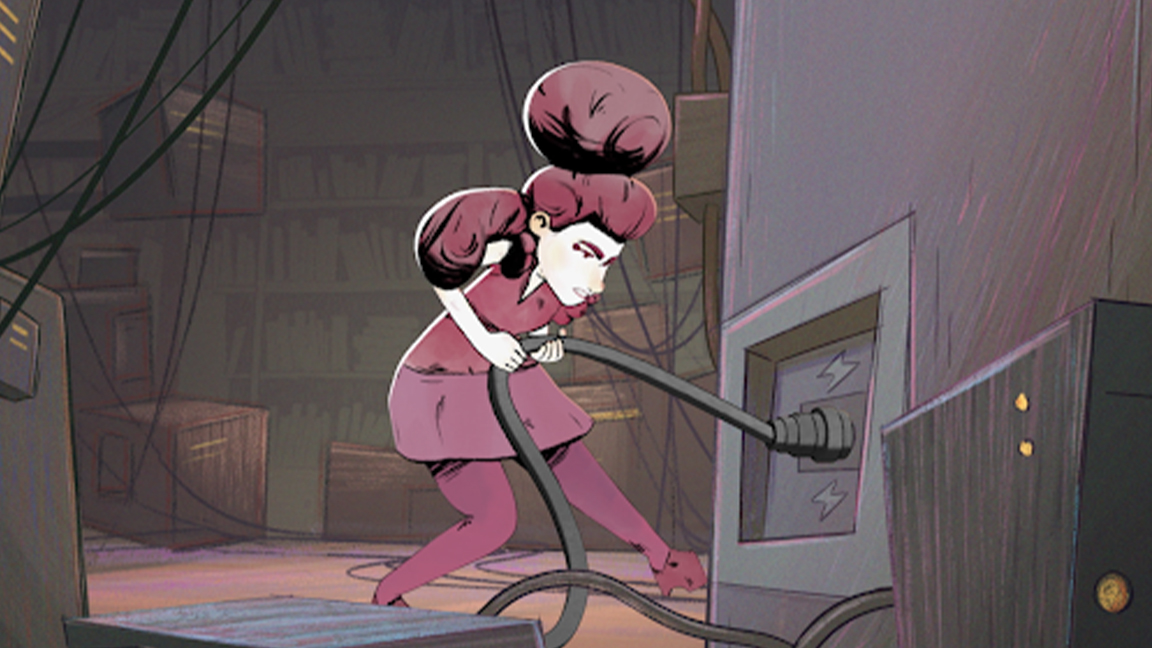
Hopefully, audiences will take away the message from Ada that we should invest in the social structures to support transformative technologies in parallel and in proportion to our investment in the technologies themselves. This idea is perhaps more relevant when it comes to advanced AI than any other subject in the series. Ada Episode 4: Should we create superintelligent AI? will be released on Thursday, February 20th on TED-Ed’s YouTube channel, where episodes on artificial wombs, legalising organ sales, and the best ways to survive the apocalypse are already available.
Has Ada inspired you to get animating? Mixing the best animation software and the best digital art software is a unique approach.
